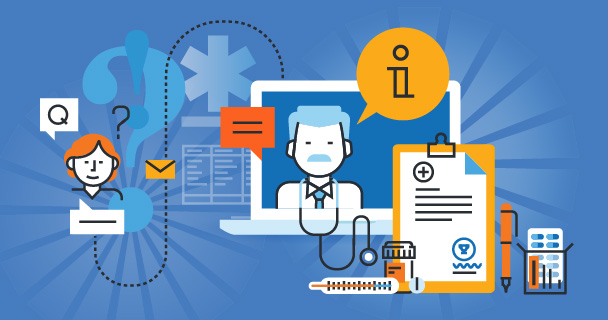blog


This blog post is the third of three excerpts from our recent article, Prioritizing Health Literacy in Your Organization Will Improve Patient Access While Cutting Costs.
There is definitely a link between health literacy and health outcomes, but unfortunately only a small portion of Americans have an adequate level of understanding that is needed to manage their health effectively. While government agencies are making efforts to improve the health of Americans by creating accessible health information, healthcare professionals and systems must work at the same time to ensure patients are receiving understandable health services and information. Improving access of patients to health information has the potential to improve patient health, increase the use of preventive services, decrease the rate of hospitalization, and cut exorbitant healthcare costs.
What Should We Do to Improve Health Literacy?
Evaluating your organization’s existing approach to health literacy and communication can serve as an initial indicator for what work needs to be done. ODPHP (2006) suggests considering the following four overarching strategies when first addressing health literacy at your organization:
In addition to these general approaches, the following specific strategies can help your organization navigate the work of developing appropriate health communication from healthcare professionals to people of all levels of health literacy.
Pay Attention to Communication
The ODPHP (2010) suggests using targeted approaches to communication and tailoring programs to meet the needs of low health literacy groups to improve outcomes among patients with limited health literacy.
Additionally, using plain language, which is defined by ODPHP (2006) as “communication that users can understand the first time they read or hear it,” is an important strategy for improving health literacy.
Implement the Health Literate Care Model
HHS developed a Health Literate Care Model that can be used as a universal precautions approach to serving patients while keeping health literacy a priority. It incorporates health literacy principles from the Universal Precautions Toolkit into the Chronic Care Model and suggests that healthcare providers do the following: “Approach all patients as if they are at risk of not understanding health information, employ a range of strategies for clear communication, and confirm that patients understand what providers are saying” (ODPHP, 2018).
Utilize Health Literacy Online
When designing a website or digital health information, Health Literacy Online is a research-based guide provided by HHS that aids in creating effective products for all users—including those with limited health literacy skills (ODPHP, 2018).
References
Office of Disease Prevention and Health Promotion (ODPHP). (2006). Quick guide to health literacy. U.S. Department of Health and Human Services. Retrieved from https://health.gov/communication/literacy/quickguide/Quickguide.pdf
Office of Disease Prevention and Health Promotion (ODPHP). (2010). National action plan to improve health literacy. U.S. Department of Health and Human Services. Retrieved from https://health.gov/communication/HLActionPlan/pdf/Health_Literacy_Action_Plan.pdf
Office of Disease Prevention and Health Promotion (ODPHP). (2018). Health literacy and communication. Retrieved from https://health.gov/communication/
HealthStream’s learning management system and healthcare training solutions support medical training initiatives and allow for the best patient care.
View All Learning & PerformanceExpand the decision-making skills and effectiveness of your healthcare workforce with HealthStream's workforce development programs and services.
View All Clinical DevelopmentHealthStream credentialing solutions bring automation, consistency, and insight to every step of the provider lifecycle—supporting clinical excellence and operational efficiency.
View All CredentialingHealthStream’s scheduling solutions help organizations—from acute to non-acute systems, large and small—optimize staffing, reduce burnout, and support staff with scheduling tools that adapt to their needs.
View All SchedulingWhen you enact HealthStream's quality compliance solutions, you can do so with the confidence your healthcare organization will meet all standards of care.
View All Quality & ComplianceTransform end-to-end revenue cycle management with comprehensive education
View All Revenue Cycle EducationLearn about our advanced resuscitation training solutions. Our solutions are designed to help improve patient outcomes.
View All Resuscitation